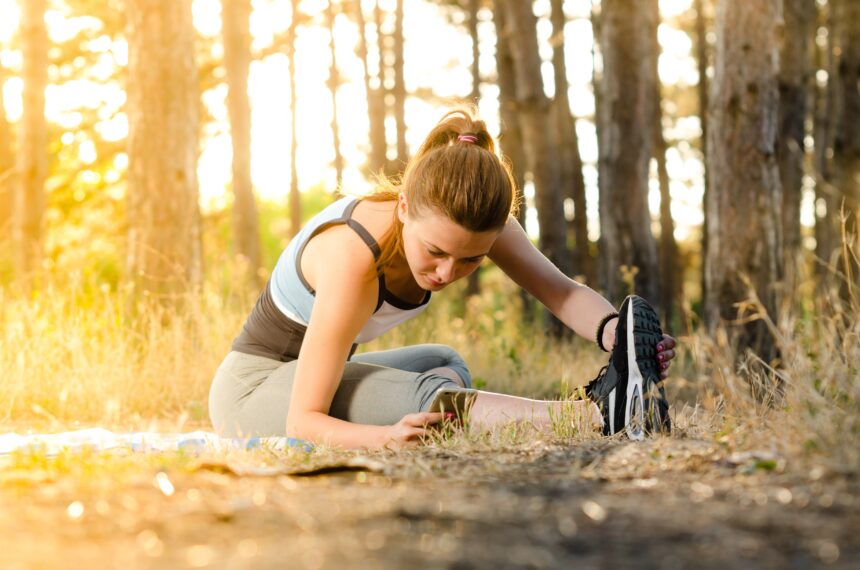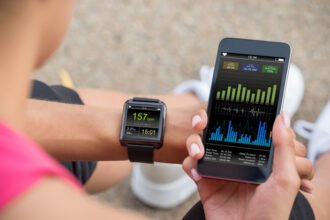Suffering from chronic back pain can significantly affect how active you are, and may make you significantly more susceptible to a sedentary lifestyle, including the many health complications that accompany it.
Because back pain is often amplified by movement, many are not aware of the fact that light aerobic exercises can actually greatly improve your back health. Aerobic exercise, as you might know, increases the flow of blood and nutrients through our bodies, and increased blood flow is great for helping back pain as well as loosening up the joints and muscles that cause stiffness.
The key is doing light exercises that don’t require too much effort, impact, or strain from your core or back muscles, and doing these exercises long enough to get a significant amount of blood flow to the injured parts of your body. In this case, it’s good to do exercises that require you to maintain a straight posture, and are light on your legs, core, and back.
Here are four low-impact exercises focused on aerobics that people of all fitness levels can do for extended periods of time to both get in shape and eliminate back pain.
1. Walking
Possibly the oldest form of exercise there is, walking puts very little stress on the joints. As an added plus, the human body is more used to walking than pretty much any other form of exercise — after all, it was the primary mode of movement that we’ve evolved to master.
The blood you get pumping in an hour of walking can slowly help heal your back as well as loosen it up. Many people don’t realize how many calories you can burn from walking; a 180-pound man can burn over 350 calories by walking 3.5 miles in 1 hour, while a 120-pound woman can burn around 225 calories doing the exact same activity. These measurements are a lot easier to obtain nowadays, however, which is attributable to the rise in popularity of wearables and “smart apparel” that track a user’s “speed, distance, and acceleration,” as well as “muscle activity, calorie burn, and other biometrics,” according to Amsterdam Printing.
Additionally, maintaining straight posture while walking is an extremely effective way to condition your muscles and joints to hold that posture whether you’re walking or not. As you strengthen your posture through walking, you’ll notice more support from your core, and, hopefully, less pain in your back.
2. Swimming
Having limited or no impact on the joints, swimming remains one of the best exercises for any disabled or injured person. Swimming forces you to use the core muscles that so many of us tend to neglect until we injure our backs, hips, or other major muscle groups.
Not only does swimming give all of your joint-supporting muscles a workout, but it is one of the best forms of cardiovascular exercise to help you prevent the onset of heart disease. The many muscles used during swimming require blood and heightened circulation, sending increased oxygen and nutrients to various parts of the body, allowing you to heal and bring balance and support to strained joints.
“Swimming fires up more of your body’s major muscle groups than other forms of cardio exercise,” says Natasha Van Der Merwe, director of triathlon at Austin Aquatics and Sports Academy in Austin, Texas. “Swimming not only engages your legs, but also recruits your upper body and core, especially your lats — the muscles of your middle back — and triceps,” she explains in an article for Healthline.
Swimming is a great full-body workout, and, because you’re suspended in water, the impact is essentially negated. As far as low-impact goes there’s only one other exercise that compares…
3. Stationary Cycling
One of the best fast-paced, low-impact forms of exercise that you can do, cycling gives your back a chance to rest while you get in an excellent workout. Like swimming, cycling increases circulation, and really gets the blood flowing in your hips and core, both of which are huge in supporting your back.
Cycling or “spin” classes have become very popular in the past decade or two, as they offer a strenuous workout from a comfortable seated position. Actual cycling, in comparison, can give you more of a view as you traverse across the land, but, unfortunately, it can be more dangerous, and, more importantly, harder on your back. Unless you have an extremely good suspension system on your bike, the ride could potential do more harm to your back and spine than good.
If you want to start a routine, start slowly, “perhaps with a five-minute session at a comfortable pace three times per day,” says Matt Goodemote in an article on arthritis.org. “Once people can ride with no pain for five minutes three times a day, I bump them up to seven minutes, then to 10, 15 or 20 three times per day – getting them to 30, 45 or 60 minutes of exercise per day. Initially, adding five minutes seems like a big jump, but once tolerance builds, larger gains are made in shorter time frames. Down the road, people can more easily add 15-minute increments to their rides.”
Stationary cycling, like swimming, puts little to no stress on your joints and could be a great regular routine for those with back injuries and/or chronic pain.
4. Elliptical Trainer
An elliptical machine offers as smooth a ride as a stationary cycle while giving you the same feeling as walking or even jogging. With an elliptical, you step up in fluid motion on rotating pedals, though your feet never move off of those pedals. It’s somewhat like cross-country skiing, as you are constantly taking power steps to keep the machine moving, and is a great workout for building up strength and endurance in your hips and core.
The elliptical machine is great for people who have less-than-healthy knees (as opposed to the stationary cycle) as well as a bad back because of the fluid motion of the machine. As with walking, straight posture is very important when using an elliptical in order to keep your rhythm and stride throughout your workout. This is a great machine for those with poor posture or who have to remain seated in an office all day.
Many back problems are brought about by either a weak core, back, and support muscles brought on by a sedentary lifestyle, or are simply brought about by overexertion during strenuous activities that are only done once in a while. The key to preventing back pain as well maintaining back support is consistent exercise of all of the supporting muscles.
It’s the simplest exercises that train our bodies to function as they should and, if done frequently, can prevent annoying joint and muscle aches from plaguing you. Along with these exercises, adequate stretching and rest can play a huge role in keeping your back healthy and loose. Take some time to stretch in the morning when you wake up or even if you have been sitting down for a long period of time. Do the same thing before and after daily exercise.
Remember, these exercises are meant to allow you to be active while putting less stress on your back — don’t forget to rest in between workouts. Including massage therapy is a good way to make sure you’re relaxed and well-rested after a workout, and it can also help to provide everyday pain relief, decrease recovery time, and prevent further injuries. Overexertion only hinders and never helps.









